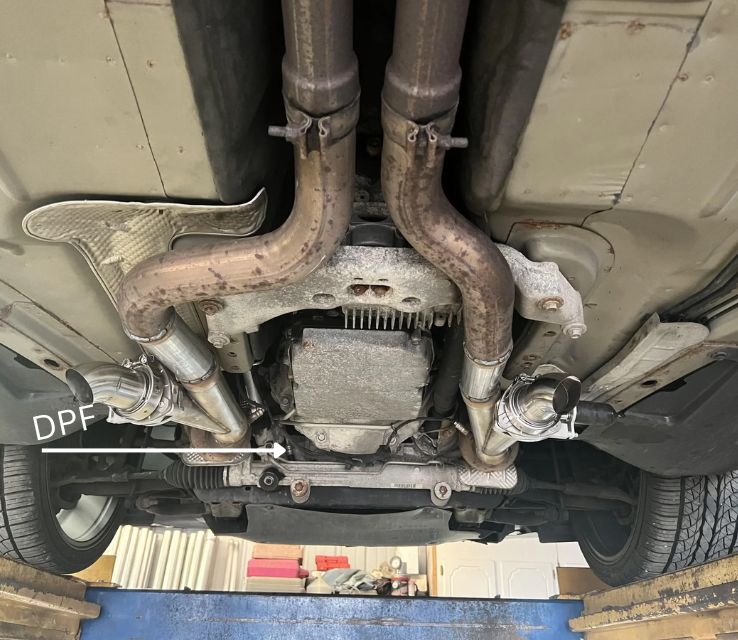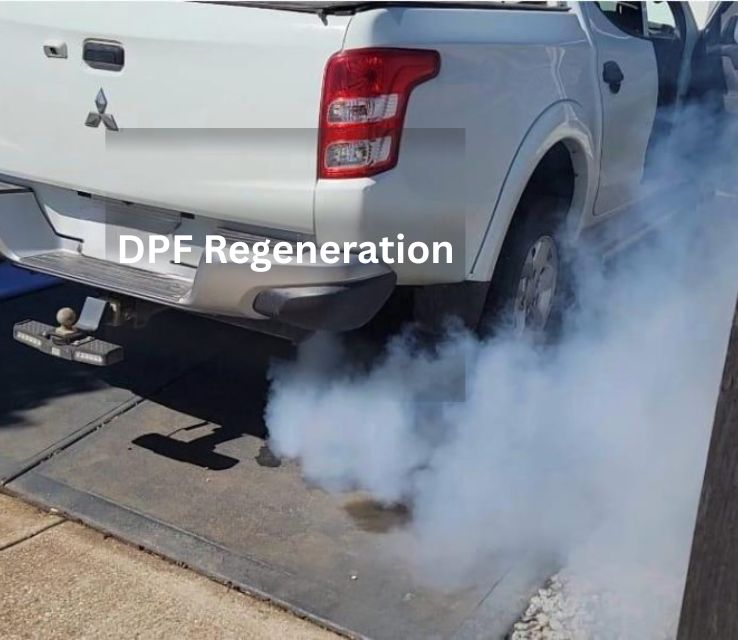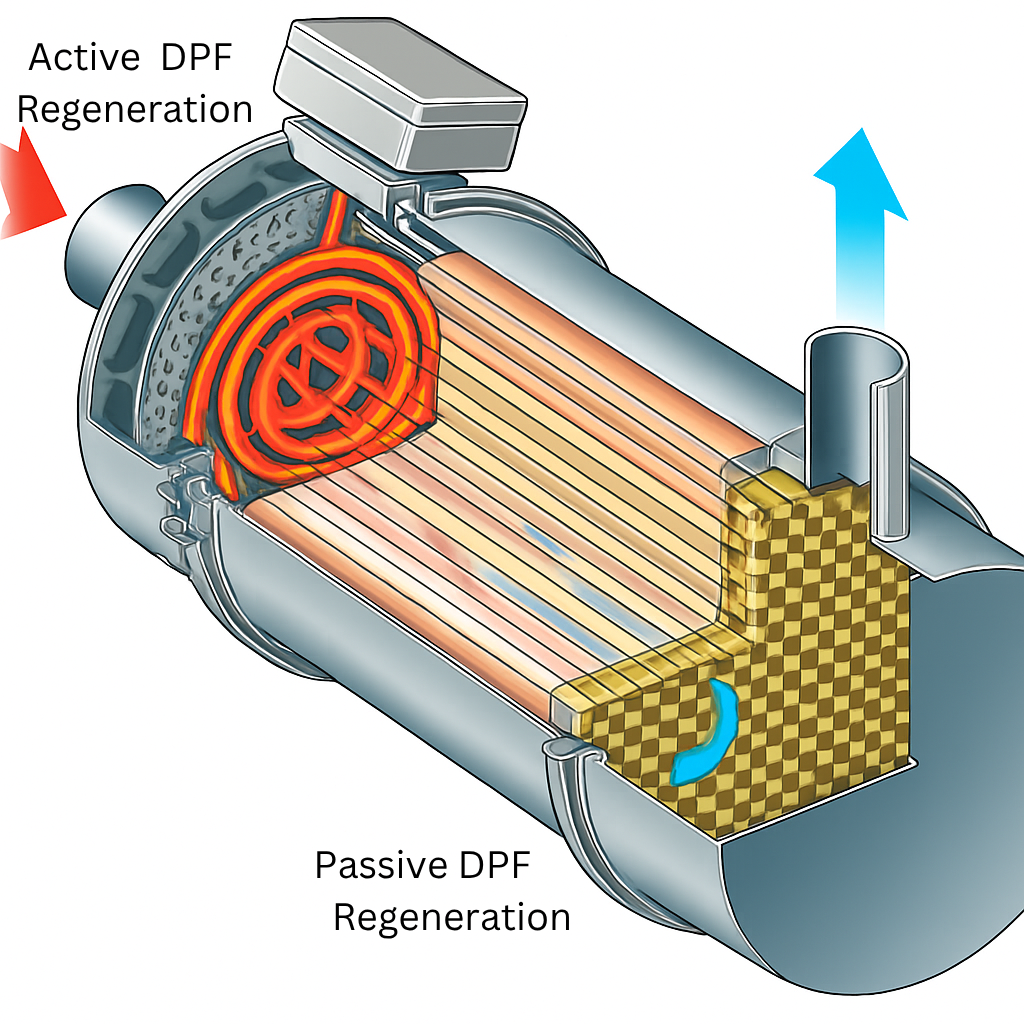A blocked Diesel Particulate Filter (DPF) can significantly reduce your vehicle’s performance and fuel efficiency . If you drive a diesel vehicle, understanding how to manage your DPF is crucial for maintaining optimal function and prolonging engine life.
Learn the top causes of DPF blockages and how to fix or prevent them to keep your diesel engine running smoothly.
What Is a DPF?

A DPF is a component of modern diesel engines .It is made to catch and hold harmful smoke and particles that come out when something burns. , The DPF plays an essential role in reducing particulate matter that can contribute to air pollution and health issues.
By filtering out these particles, the DPF not only helps meet strict pollution rules standards but also enhances engine efficiency, as a cleaner exhaust system can lead to improved fuel economy.
While DPFs are effective, they require regular maintenance and occasional regeneration processes to function optimally. Regeneration involves burning off the accumulated soot at high temperatures, which can be achieved through passive or active methods.
What Causes DPF Issues?
DPF issues can stem from several factors that often go unnoticed until they escalate into significant problems.
One common culprit is short trips when a vehicle is primarily used for brief journeys, the Diesel Particulate Filter (DPF) doesn’t reach the high temperatures needed to burn off accumulated soot, leading to clogs over time.
Using low-quality diesel fuel can introduce contaminants that hinder the DPF’s ability to function correctly, contributing to premature failure.
Another significant factor is the engine’s condition . If the engine is burning oil or has a malfunctioning fuel injector, it can lead to excessive soot production, which overwhelms the DPF’s capacity. Regular maintenance and timely diagnostics are essential in catching these issues early.
How To Know If Your DPF Is Blocked
when car struggling to accelerate or emitting more smoke than usual these could be signs that your Diesel Particulate Filter (DPF) is blocked. The reasons is vital component gets clogged can save you from costly repairs and improve your vehicle’s performance.
It can be frustrating to drive your car and notice it’s losing power or becoming harder to start. These could be signs of a blocked Diesel Particulate Filter (DPF
You might notice an increase in fuel consumption as the engine works harder to push exhaust through the clogged filter. Regular monitoring of your vehicle’s performance and keeping an eye on diagnostic trouble codes (DTCs) can help catch issues early, preventing further complications.
What Is DPF Regeneration?

DPF regeneration is the process of cleaning a Diesel Particulate Filter (DPF) by burning off accumulated soot.This process helps maintain optimal engine performance and reduces harmful emissions, keeping your vehicle compliant with environmental regulations. Essentially, it’s the filter’s way of “self-cleaning” to ensure efficiency.
Regeneration can occur naturally during regular driving conditions when the exhaust temperature is high enough. If the filter becomes too clogged, manual intervention may be required to perform a forced regeneration, which involves running the engine at higher RPMs to elevate exhaust temperatures and burn off the soot.
What Is ‘Active’ DPF Regeneration?
Active DPF regeneration occurs while you’re driving, typically when the engine reaches a specific temperature and conditions are ideal for cleaning. During this process, the engine management system injects extra fuel into the exhaust stream to raise the temperature within the DPF. This high temperature allows trapped particulate matter to combust effectively.
This method is designed to happen seamlessly while you’re on the road, so you might not even notice it occurring. If you frequently drive short distances or at low speeds, active regeneration may not trigger often enough, leading to potential blockages in your DPF over time.
What Is ‘Passive’ DPF Regeneration?
Passive DPF regeneration takes advantage of natural driving conditions to clean the filter without any additional fuel injection. It typically occurs during highway driving when the exhaust temperatures are consistently high enough to burn off accumulated soot automatically. This makes it an efficient way to maintain your DPF without requiring driver intervention.
Unlike active regeneration, passive regeneration is less frequent but highly effective for those who regularly drive at higher speeds. Understanding this process can help drivers plan their trips better, ensuring their DPF filter remains in good health and extends the lifespan of their vehicle.
How To Unblock a DPF
Unblocking a Diesel DPF filter can be essential for maintaining your vehicle’s performance and efficiency. One common method is to allow the DPF to undergo active regeneration, where the engine management system increases the exhaust temperature to burn off accumulated soot.
If you find yourself frequently dealing with a blocked DPF, it may indicate underlying issues, such as driving habits or engine problems that need addressing.
Another effective approach is using a DPF cleaning additive, which can help dissolve soot build-up and improve the filter’s efficiency. While this method can provide immediate relief, regular maintenance and monitoring are crucial to prevent future blockages.
Active Or Passive Regeneration

Active regeneration occurs when the engine management system initiates a process to burn off soot in the DPF during regular driving conditions. This typically happens on highways or during longer drives, where higher exhaust temperatures can be maintained.
If your vehicle frequently stops and starts or is used mainly for short trips, passive regeneration might not occur effectively, leading to soot accumulation.
Passive regeneration uses the engine’s natural heat to clean out soot (that come from burning fuel) from the DPF while driving. This process usually works best during city driving, where the engine stays warm for longer periods, allowing the filter to clean itself without needing extra help.
Understanding these two types of regeneration can help you adjust your driving habits to support your DPF’s health and longevity.
Forced Regeneration
Forced regeneration is a manual process that can be initiated by a technician when the DPF becomes excessively blocked and standard regeneration methods fail. This procedure involves increasing the exhaust temperature through specific engine control strategies, allowing trapped soot to be burned off effectively.
This process often requires specialized diagnostic tools and should be conducted in a controlled environment to ensure safety and effectiveness.
While forced regeneration can clear out significant blockages, it is essential to recognize it as a stopgap measure rather than a long-term solution. Frequent reliance on this method may indicate deeper issues with your vehicle’s fuel system or exhaust components.
Regular checks and maintenance of your DPF filter can help minimize the need for forced regeneration and keep your vehicle running smoothly.
Use a DPF Cleaner Or Get a Professional DPF clean
When it comes to maintaining your DPF filter, using a specialized DPF cleaner can be a game-changer. These cleaners are designed to break down soot and other deposits, helping to restore the filter’s efficiency.
If the blockage is severe, seeking a professional DPF clean may be the better option. Professionals have access to advanced tools and techniques that can thoroughly cleanse the filter, ensuring it performs optimally for your vehicle.
How To Avoid DPF Issues
Preventing DPF issues starts with understanding your driving habits. Short, stop-and-go trips can lead to soot accumulation, so being mindful of your driving patterns is essential. Regularly allowing your diesel engine to reach optimal temperature helps facilitate the regeneration process, burning off accumulated soot and keeping your DPF clear. Incorporating these habits into your routine can save you from costly repairs down the line.
Avoid Idling
Idling your diesel vehicle can unintentionally contribute to DPF problems by preventing the engine from reaching its ideal operating temperature. When idling, the exhaust gases don’t get hot enough to trigger the regeneration process, leading to increased soot build-up.
If you find yourself waiting in your vehicle, consider turning off the engine instead. This small adjustment can significantly enhance your DPF’s lifespan and efficiency.
Carry out regular oil checks
Regular oil checks are crucial for maintaining a healthy DPF filter. Oil quality affects how well your engine burns fuel and manages emissions. Over time, oil can become contaminated with soot and particulates, which may inadvertently enter the DPF.
By routinely checking and changing your oil, you not only improve engine performance but also help keep your DPF cleaner for longer.
Drive longer Distances
Longer drives at higher speeds can be beneficial for your DPF filter. When you drive continuously for an extended period, the engine reaches optimal temperatures that facilitate the regeneration process.
This means any accumulated soot is burned off effectively, keeping your DPF functioning efficiently. Making a habit of longer trips can help mitigate potential DPF issues and promote overall engine health.
Conclusion
Dealing with a blocked diesel particulate filter can seem daunting, but understanding your options makes the process much smoother. Regular maintenance and monitoring are key to preventing blockages from occurring in the first place.
If you find yourself facing a blockage, consider options like regeneration or professional cleaning to restore your filter’s efficiency. Ignoring the issue can lead to more severe problems down the road, so it’s best to address it promptly. Don’t wait until it’s too late take action today and keep your vehicle running smoothly.
